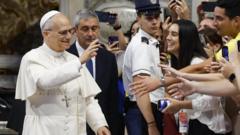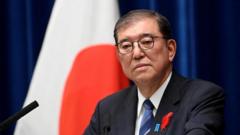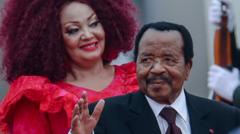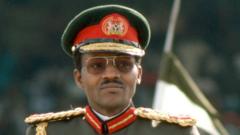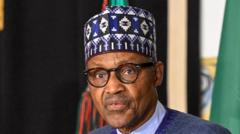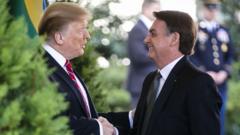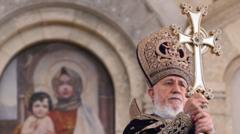The Catholic Church stands on the brink of a new era as 133 cardinals prepare to elect the 267th pope during a sacred conclave this evening in the Sistine Chapel.
Voting for New Pope Begins as Cardinals Enter Conclave
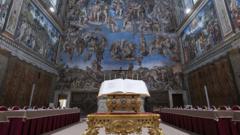
Voting for New Pope Begins as Cardinals Enter Conclave
Cardinals prepare to elect the next leader of the Catholic Church in a secretive conclave.
In a historic event taking place under Michelangelo's famed ceiling, the conclave marks a pivotal moment for the Church following the passing of Pope Francis. Starting with a mass at St Peter's Basilica, the cardinals will gather in solemnity before moving to the Sistine Chapel, where they will swear an oath of secrecy regarding the election process. With mobile signals turned off to maintain confidentiality, the cardinals will commence their voting, aiming for consensus on the new pope.
After electors process into the chapel, they will begin the voting sequence. While the first vote may not yield a result, it will help gauge the support for different candidates, as noted by Catholic commentator Austen Ivereigh. He emphasizes that the first ballot often leads to a clearer picture of the frontrunners, despite the historical trend of lengthy voting processes.
If no candidate achieves the necessary two-thirds majority, cardinals will return to Casa Santa Marta for meals and discussions, where informal consensus may start to take shape. This dining experience, complete with a select menu and strict privacy policies for staff, aims to foster strategic conversations away from the public eye.
The timing of meals and masses adds a structured rhythm to the schedule, with subsequent votes planned for Thursday morning. As cardinals engage in both prayers and discussions, the anticipation grows among the faithful awaiting the telltale white smoke from the Sistine Chapel chimney, signaling the election of the new pope. With potential divides and crucial decisions being made, the conclave represents both a challenge and opportunity for the future leadership of the Catholic Church.
After electors process into the chapel, they will begin the voting sequence. While the first vote may not yield a result, it will help gauge the support for different candidates, as noted by Catholic commentator Austen Ivereigh. He emphasizes that the first ballot often leads to a clearer picture of the frontrunners, despite the historical trend of lengthy voting processes.
If no candidate achieves the necessary two-thirds majority, cardinals will return to Casa Santa Marta for meals and discussions, where informal consensus may start to take shape. This dining experience, complete with a select menu and strict privacy policies for staff, aims to foster strategic conversations away from the public eye.
The timing of meals and masses adds a structured rhythm to the schedule, with subsequent votes planned for Thursday morning. As cardinals engage in both prayers and discussions, the anticipation grows among the faithful awaiting the telltale white smoke from the Sistine Chapel chimney, signaling the election of the new pope. With potential divides and crucial decisions being made, the conclave represents both a challenge and opportunity for the future leadership of the Catholic Church.

